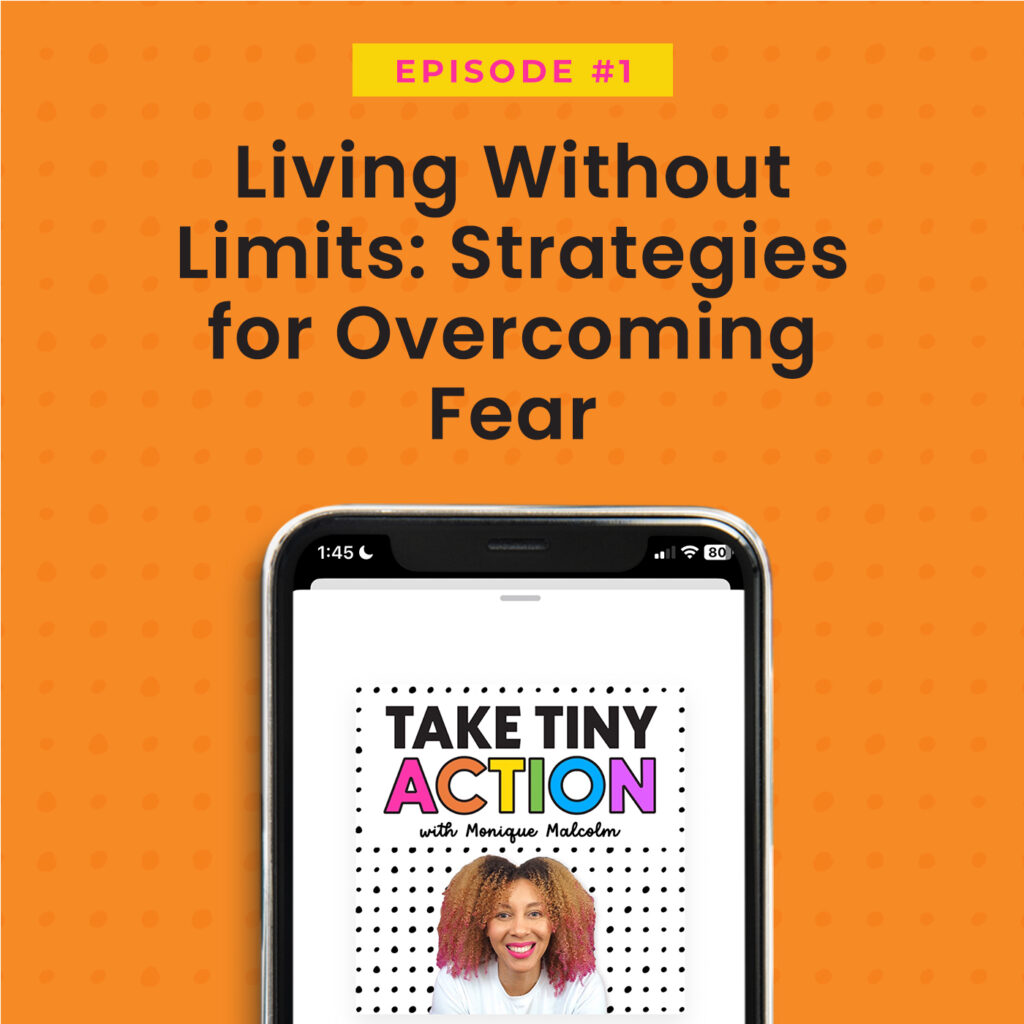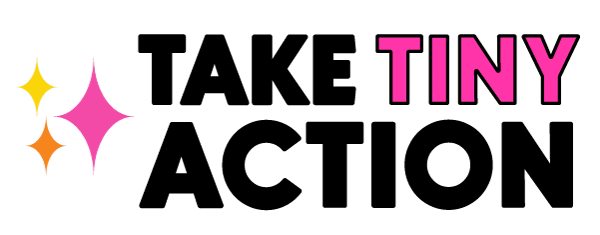
If you didn’t already know, I recently published a book titled Don’t Let Fear Have All the Fun, which shares stories and practical advice for overcoming fear. In my book, every chapter offers a key piece of advice related to fear. The advice for chapter one is “A life built on fear already has built-in limitations,” and that is the inspiration behind this episode.
Here’s my big secret about fear…
Fear is natural and everyone experiences it.
Every single human to ever walk this big beautiful ball of water has carried their fair share of fears. Those fears come in many shapes and sizes and they can be triggered by a wide range of stimuli, such as uncertainty, change, or perceived threats.
When fear becomes excessive or chronic, it can have a significant impact on our lives. It can limit our ability to take risks, pursue our goals, and form meaningful relationships with others. Fear can also lead to anxiety, stress, and other negative emotions that can harm our physical and mental health.
In order to live a vibrant, fulfilling and fun life, it’s important to understand fear and learn to manage it effectively.
In this episode, we’ll explore the nature of fear, the real cost of listening to our fears, and I’ll share some strategies for overcoming fear so what we can live a life without limitations. By the end of this episode, you’ll have the tools you need to stop letting fear have all the fun.
The Nature of Fear
Let’s kick this off by discussing the nature of fear. So, what is fear?
Fear is an emotional response to a perceived threat. It’s our body’s way of telling us that we need to be careful and stay safe. When we feel afraid, our body prepares to either fight or flee the perceived danger. This can result in physical responses such as increased heart rate, sweating, and heightened senses.
Fear is an important survival mechanism because it helps us stay alert and avoid danger. Without fear, we might not be able to protect ourselves or make quick decisions in dangerous situations. It’s a natural defense mechanism that has evolved over time to keep us safe.
However, fear can also become irrational and excessive. I’ve given the voice of our irrational fears a name, I call it the Chorus of Fear. The Chorus of Fear is the voice in the back of our minds talking us out of taking risks, doing uncomfortable things or trying new experiences.
Unfortunately, our primal fear response isn’t sophisticated enough to tell the difference between fear caused by a perceived threat or nonlethal threats to our overall well-being. This is where the problem lies.
If we don’t learn how to recognize and manage fear, it can become a limiting factor in our lives. Keeping us small, stuck, and stagnant.
These limitations can trickle down into many areas of our lives. Some examples of this are:
- Career Advancement: Fear of failure or making mistakes can prevent individuals from taking risks and pursuing new opportunities in their careers, limiting their ability to advance and grow professionally.
- Personal Relationships: Fear of rejection or vulnerability can lead to individuals avoiding meaningful connections and relationships with others, limiting their ability to form strong bonds and experience the joy of human connection.
- Personal Growth: Fear of the unknown or fear of change can prevent individuals from stepping outside of their comfort zone and trying new experiences, limiting their ability to develop new skills and perspectives and expand their personal growth.
So, the key is to recognize when fear is helping us and when it’s holding us back. By understanding our fears and working to overcome them, we can live a life that is not limited by fear, but rather guided by our passions and desires.
The Real Cost of Living in Fear
Now that we’ve covered what fear is and the nature of fear, let’s talk about the effects of living in fear.
Fear causes a lot of uncomfortable feelings. Whether we realize it or not, we are always actively or passively seeking comfort. We make dozens of decisions every day in an effort to preserve our baseline level of comfort.
As far as the Chorus of Fear is concerned, comfortable equals safe. If we’re comfortable, we aren’t experiencing feelings of distress. We aren’t stressed. We aren’t in a state of panic. Since keeping us safe is the primary job of fear, it tries to do so at any and all costs, even if that means derailing our attempts to live a bolder life. Listening to the Chorus of Fear has a cost and it takes a toll.
Do you know how much you’re paying?
Letting fear be the driver of your decisions is like taking the expressway toll roads along the highway of your life. You barely register the tolls that you’re paying. You see the signs that a toll booth is coming up but you don’t stop to think about the cost, you just pay it.
Seventy-five cents here. One dollar and twenty-five cents there. Fifty cents here. Another two dollars. Those debits seem small but over the span of your life they add up.
The price you pay for letting fear drive your decisions shows up in the form of a physical, emotional, or financial toll. Sometimes it’s all three.
Physical tolls put a strain on our physical wellbeing. Leading to problems with our cardiovascular system, digestive issues, and sleep.
Emotional Tolls put a strain on our emotional state of mind. Leading to anxiety and depression, low self esteem, and isolation.
Financial Tolls put a strain on our finances. Leading to missed career opportunities, overspending, and avoiding investments.
Most of the time we don’t recognize the true cost of taking life advice from the Chorus of Fear. The price we pay is often greater and more painful than the uncomfortable feelings caused by fear. Physical, emotional, and financial tolls are the unaccounted for costs of letting fear have a say in our decision making.
Strategies for Overcoming fear
So, how do we overcome our fear? I have a lot of thoughts on this. So many that I wrote a 194 page book.
The thing is there isn’t one singular strategy. There are a combination of things that you can try. The good news is that you don’t have to aim for becoming fearless. You can feel the fear and keep make small progress forward.
Here are 5 strategies for overcoming fear:
Face your fears: Facing your fears helps to desensitize you to the fear-inducing stimulus and builds your confidence in your ability to handle difficult situations. When you avoid your fears, you reinforce the idea that the thing you are afraid of is dangerous or unmanageable, which can make your fear even stronger. In contrast, when you face your fears, you send a message to your brain that you are capable of handling the situation, which can help to reduce the intensity of your fear response over time. Start with small steps, and gradually work your way up to bigger challenges.
Reframe negative thoughts: Reframing negative thoughts helps to shift your perspective and challenge the irrational or unhelpful beliefs that underlie your fear. Often, fear is fueled by negative thoughts or self-talk that exaggerate the potential risks or negative outcomes of a situation, or that undermine your confidence and ability to cope. Reframing negative thoughts involves identifying these patterns of thinking and replacing them with more realistic, positive, or empowering thoughts. Try to reframe negative thoughts by focusing on the positive and finding the silver lining in difficult situations.
Practice self-care: Practicing self-care helps to reduce stress and anxiety, which can often fuel fear. Self-care practices such as exercise, meditation, or deep breathing can help to reduce stress and promote relaxation, which can counteract the physiological effects of fear. By taking care of your body and mind, you can increase your resilience and ability to cope with difficult situations, which can help to reduce fear. Engage in activities that make you feel good, such as exercise, meditation, or spending time with loved ones.
Ask your cheer squad for support: Seeking support can provide you with a sense of connection, validation, and encouragement. Fear can often feel isolating and overwhelming, and it can be difficult to know how to move forward on your own. By reaching out to others for support, you can tap into a network of resources and perspectives that can help you to overcome fear and build greater resilience. It’s important to surround yourself with positive, supportive people who uplift and encourage you.
Self reflection: Self-reflection is a good strategy for overcoming fear because it can help you to identify the root causes of your fear and to challenge negative beliefs or thought patterns that may be contributing to it. When we are in a state of fear, our thoughts can become distorted or exaggerated, and we may struggle to see things clearly or objectively. Self-reflection can help to bring a sense of clarity and perspective to the situation, which can be empowering and help to reduce fear.
By incorporating these strategies into our lives, we can gain greater insight, resilience, and the ability to take control of our fears. Remember, overcoming fear is a process and it takes time. Be kind and patient with yourself, and keep taking steps forward, even if they’re small ones.
Conclusion
In summary, fear is a natural human emotion that can both help and hinder us. While fear can be a powerful force, it doesn’t have to hold us back. By understanding the nature of fear, recognizing its effects on our lives, and developing strategies for overcoming it, we can learn to live our lives without limitations.
I want to encourage you to reflect on your relationship with fear and to work towards freeing yourself from some of those limitations you’ve put in place.
We’ve come to the end of today’s episode, but your journey toward personal growth and success is just beginning. Don’t let fear and overwhelm hold you back – take those tiny actions and watch your life transform. And if you want more support and resources, join our email list taketinyaction.com/newsletter, and be the first to hear about new episodes and exclusive content.
